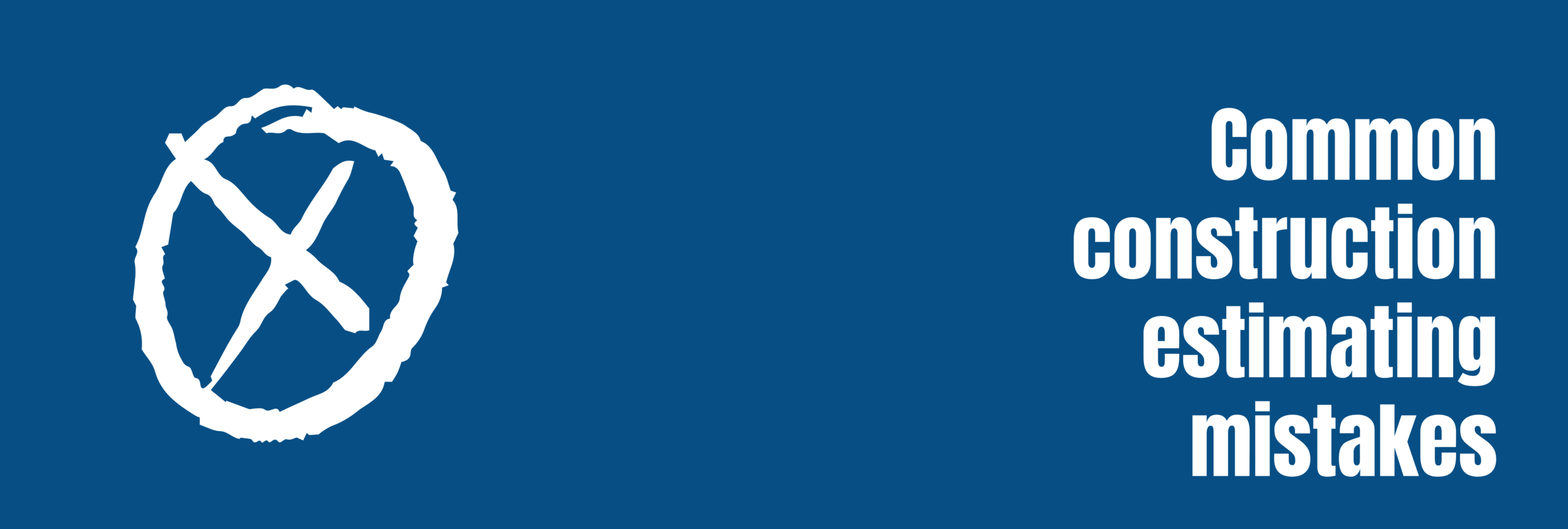
Why builders lose money on residential projects (and how to stop It)
Wednesday, September 24th, 2025
Construction estimating mistakes can be a nightmare. If you’ve ever finished a job and thought, “Where’s the profit gone?”, you’re not alone. Many builders lose money not because they can’t build, but because the numbers weren’t right from the start. At HBXL we say: you make your money on the laptop, you spend it on site. Get the estimate wrong, and there’s almost certainly no way to claw it back later.
Estimating properly on construction projects, small and large alike, is critical because it directly impacts profitability, project success, and business sustainability. And there’s a fair amount of risk in construction given the variables at play and high numbers at stake.
Here we look at common construction estimating mistakes, by answering the most common questions builders ask. Avoid the same mistakes and you can protect your margin.
Why do builders lose money on jobs?
The short answer: poor estimating and weak planning. From missing site details to forgetting overheads, underestimating timelines, mis-calculating, or using out-of-date costs, every slip chips away at your margin. Builders often “win” jobs (was it a win?) by lowering prices – but of course, end up losing profit along the way.
Why is an accurate estimate so important?
Because “rubbish in, rubbish out.” A poor estimate sets you up for a poor profit. Every figure in your quote needs to be solid, not guesswork.
- Don’t rush estimates just to meet a deadline
- Don’t guess what you think the client will pay and work backwards
- Don’t go with years old numbers because you were recommended.
What happens if I don’t visit the site before quoting?
You’ll miss crucial details like:
- Access restrictions
- Ground conditions
- Site surroundings and parking issues.
Each one can add time and cost you haven’t allowed for. Ask the customer helpful questions while you’re there.
Can I just use square metre rates?
No. Every project is unique. Past experience can guide you, but a “standard” figure ignores complexities. That’s where builders often underprice jobs.
What costs do builders forget to include in an estimate?
This is where profits are most often lost:
- Each and every material item – by under-counting or over-looking the material in the first place
- Skips and waste removal
- Site facilities
- Permits and temporary structures
- Wastage – breakages and so on
- Tool wear and tear (they break, get lost, or need replacing)
- Plant hire – often left out or underestimated
- Your own time – or anyone in the team spending time on the road or in meetings.
Miss any of these, and you’ll pay for them out of your own pocket.
How should I set my profit margin?
Many builders confuse profit with VAT – they’re completely separate.
- Profit is what pays you and grows your business. You add to the total cost, after accounting for all direct and indirect costs. You should be aiming for at least 20% if not more.
- VAT is a tax passed straight to HMRC. It’s not yours.
- Set your margin too low and you’re working for nothing.
What about overheads and timescales?
- Spread your annual overheads (insurance, vans, office costs etc) across every project. Who else is going to be pay for them, if not your customers?
- Be realistic with timescales. Over-optimistic programmes lead to delays, stress, and eroded margins.
How does poor communication cost money?
- Subcontractors: If you don’t brief them properly you won’t get accurate figures from them, and our estimate will be shaky. And if the job is chaotic they won’t work with you again.
- Clients: Be clear about provisional sums for unknown items. If you bury them in the main quote, you’ll be stung later.
- Teams: They need clarity. Without a build programme for instance, nobody knows what’s next, and delays snowball.
What do I do about inflation?
If you won’t be starting a job for, say six to nine months, prices will rise. You need a strategy:
- Quote a “valid until” date
- Warn of likely increases – maybe give a now and then price.
- Or risk paying for the difference yourself.
What’s wrong with spreadsheets for estimating?
One missed cell or formula error can wipe out thousands of pounds. And spreadsheets don’t link to your contracts, health & safety, or job management. That leaves dangerous blind spots.
Does the presentation of an estimate make a difference to a customer?
- A quality looking estimate demonstrates professionalism, critical for winning the work
- Detailed information builds customer confidence in your competence
- Transparent quotes help win the work and manage expectations – and even reduce disputes
- Structure your estimate clearly so both you and your client know exactly what’s included.
How can builders make sure quotes are accurate?
- Visit every site before pricing
- Read the plans carefully
- Use current material and labour rates
- Include wastage, plant hire, wear and tear
- Check and double-check your figures
- Allow for inflation and overheads.
How does estimating software help builders save money?
Repeatedly under-estimating erodes profits and risks preventing business growth. You want to be able to plan for new overheads, and invest in future projects. In short, estimating properly is the difference between a profitable, smoothly run job and one that causes stress, financial strain, or reputational damage. It’s not just about numbers – it’s about protecting your business and your customers.
If these common construction estimating mistakes ring true, but you’re daunted by the answers, professional estimating software takes away the risk.
EstimatorXpress, the UK’s leading estimating software for residential builders, gives you accurate, detailed quotes using the latest prices. It links seamlessly with the rest of the HBXL range – from job management in BuildProjex, safety measures in Health & Safety Xpert to contracts in ContractsXpert – so the whole project is sewn up, seamlessly end to end – using one set of data.
If you’re unsure of your take-off skills, you can go a step further and use the Take-off tool that EstimatorXpress can come with. You trace over the plans to provide the dimensions, and the software will take it from there.
Need extra help?
- Upskill with our Estimating Skills courses from the HBXL Skills Academy, whether that’s our fully funded or 90% funded Skills Bootcamps or CITB courses with 30% of the course to pay.
- Or use the HBXL Estimating Service for complex quotes or when time is short.
Ready to protect your profits? Ask us for a demo or free trial of EstimatorXpress today.










